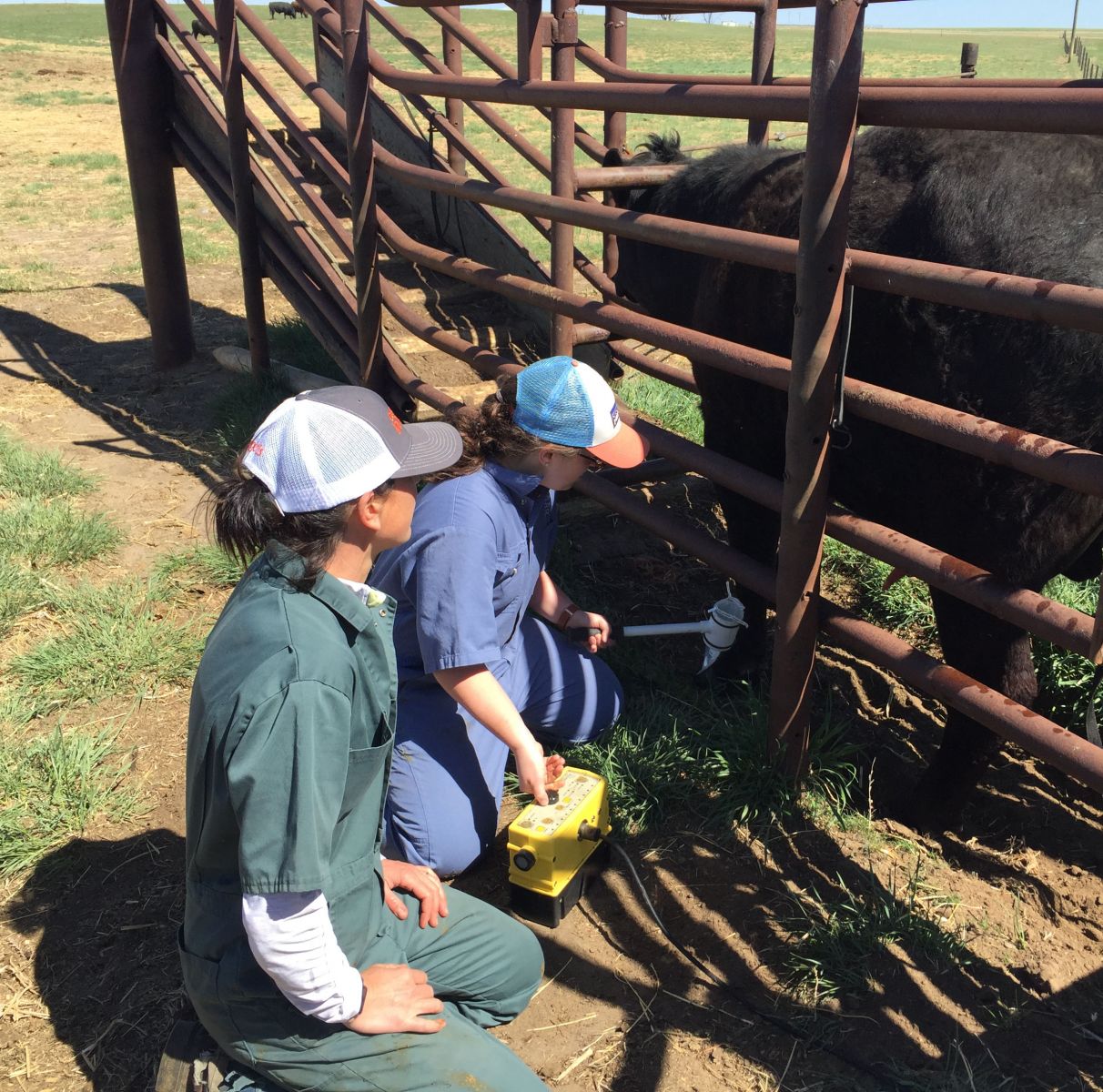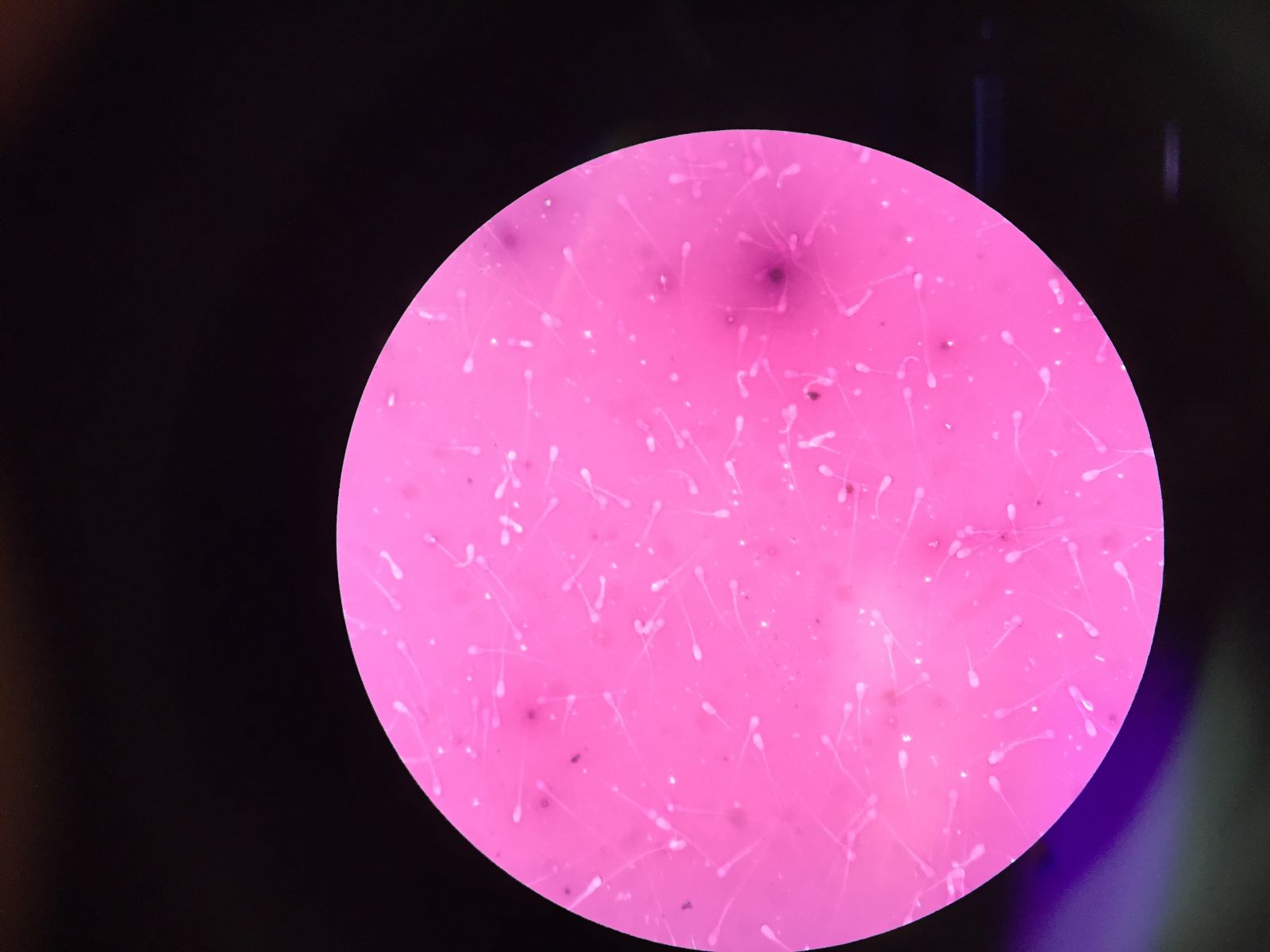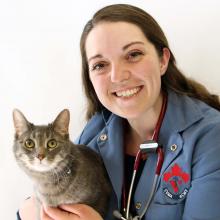Hello everyone and thank you for joining me on my Western Canadian veterinary adventure! I am so excited to share with you all the new and exciting experiences this province has to offer as I take my first steps into practicing veterinary medicine. I arrived on the ranch where I will be staying for my externship to find my one-bedroom cabin surrounded by beautiful views of pastures with grazing beef cattle and working horses. The huge prairie skies displayed incredible cloud formations and beach-like sunsets. To be living right within the heart of ranch country will provide many great learning opportunities for a young vet to learn about the beef industry. After all, I am in the province with the largest proportion of beef cattle within Canada!
 One of my first experiences with beef medicine had to do with reproduction, but first let me give a quick overview of how beef cattle are bred. In general, Alberta breeding cattle are raised entirely outside on a pasture. Bulls are turned out with the breeding stock for two heat cycles (about 45 days) to allow for natural insemination. It is very important for cows to get pregnant in this manner as the volume of cattle and the management style makes artificial insemination next to impossible. This puts a lot of pressure on the bulls to “perform” and so it is imperative for them to be reproductively sound, which is where the veterinarian comes into play!
One of my first experiences with beef medicine had to do with reproduction, but first let me give a quick overview of how beef cattle are bred. In general, Alberta breeding cattle are raised entirely outside on a pasture. Bulls are turned out with the breeding stock for two heat cycles (about 45 days) to allow for natural insemination. It is very important for cows to get pregnant in this manner as the volume of cattle and the management style makes artificial insemination next to impossible. This puts a lot of pressure on the bulls to “perform” and so it is imperative for them to be reproductively sound, which is where the veterinarian comes into play!
Each year before being turned out with the ladies, bulls undergo a breeding soundness exam. We look at the physical condition of the animal, assessing if the bull will be able to travel across the pasture to find cows in heat and if he will be able to mount. Next we measure testicle size as there is a scientific association between testicle size and semen production. Lastly we collect semen and evaluate the sperm for volume, motility, and any abnormalities that might affect the ability of the semen to fertilize the egg. Semen is collected by rectally stimulating the sex glands in the bull resulting in ejaculation. We assess a droplet of semen for overall motility and then stain it to assess the physical quality of the individual sperm. With all this information, each bull is then graded for reproductive potential so that the rancher can make decisions on who to turn out with their breeding herds. This is also a good time to administer annual vaccinations, anti-parasitics, and collect preputial samples to test for Tritrichomonas foetus (a parasite that can cause infertility in cattle), as the bulls are contained within a chute.
First the semen sample is immediately evaluated under a microscope to assess motility. In this video you can see swirling eddies which indicate a high percentage of progressive motility.
Ne
Although this may not sound like the most glamourous duty of a bovine vet, it was exciting to participate in a topic which I had learned about in my classes and had never actually seen before. It was also a great opportunity to tie veterinary medicine to the beef industry, demonstrating a key part of how the food on many of our plates is produced!
